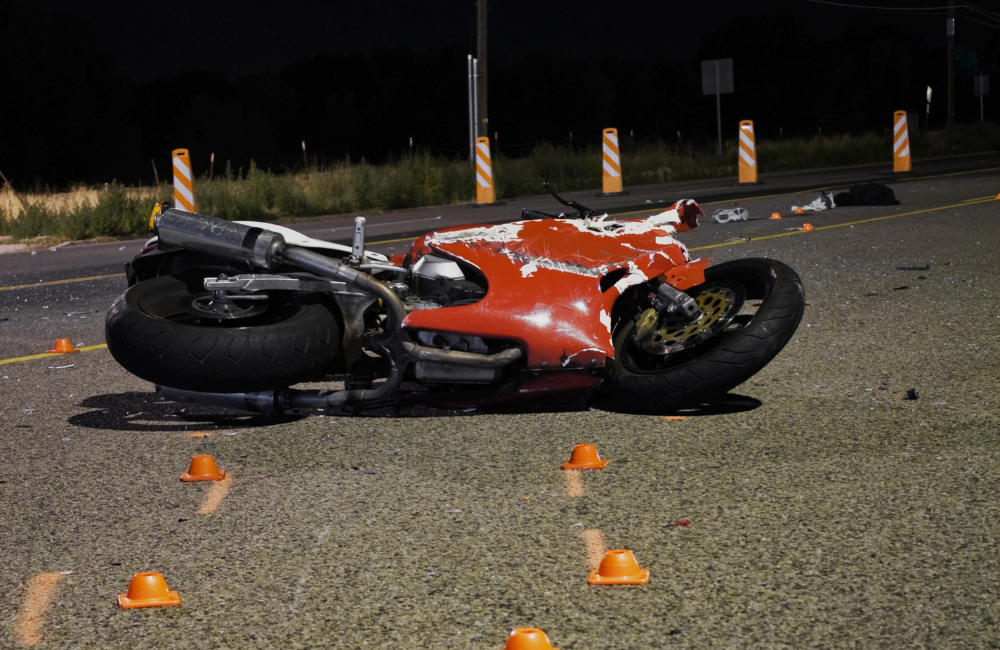When Is An Employer Responsible For Injuries Caused By An Employee?
Workers making sales calls, pizza, and other deliveries, driving to meetings and closing deals can become inattentive or too fast. When their negligence injures you, compensation may come from those who hired or engaged the worker.
The basis for holding an employer responsible for employee accidents rests in the concept of respondeat superior, or vicarious liability. When it applies, the master answers for the wrongs of the employee. The rule requires proof that the negligent employee acted in the scope of employment at the time of the crash.
Below, we touch upon scenarios that may allow you to tap into a vicarious liability. Even if some element of it is missing, you may have grounds to hold the employer responsible for its own negligence.
1. The Purpose of the Trip
Commutes to and from work normally do not make the employer responsible for injuries caused by an employee. For those situations, you pursue the employee and the employee’s auto insurance or your uninsured motorist coverage directly.
If you’re injured by an employee driving to a job site, vicarious liability may arise. Such scenarios may involve food or other merchandise deliveries, a trip to inspect or repair the property, an employee driving to court or deposition in a case involving the employer, or trips to a meeting.
2. Using a Personal Vs. Company Vehicle
Your ability to hold an employer responsible for employee accidents does not diminish solely because the crash involves the employee’s personal car. The test involves whether the employee was conducting company business while in the vehicle. As auto accident lawyers, we look at the accident report and written statements of drivers or witnesses to determine the purpose of the trip in the personal vehicle.
If you see a company name on a traffic crash report as the at-fault vehicle, chances are that the driver acted within the course and scope of employment. However, that is not automatically the case. Employees who drive company vehicles home after work likely have the status of commuters. In these situations, we search for driving offenses and other evidence of the employee’s poor driving record to establish that the employer negligently entrusted the company vehicle to the employee.
3. Reckless or Impaired Driving
At first blush, you might think an intoxicated employee could not make the employer liable for crash-related injuries. The fact that the employee violates company policy does not necessarily mean the employee did not have the authority to use the company vehicle. Courts likely will treat an employee’s car use as permissive if the employee was performing job assignments or expressly allowed to use the car.
Whether the employee drove drunk in a personal or company vehicle, the inquiry turns to whether the employee acted in the course and scope of employment. If not, but the employee took the company car, we can seek to hold the employer responsible for injuries caused by an employee if the employer knew or should have known the employee was intoxicated or was likely to drive while intoxicated.
4. Cell Phone Use
In 2019, distracted driving claimed 3,142 lives in the United States. Of the 33,244 fatal crashes in 2019, distracted driving accounted for 2,895 of them. Cell phone use was involved in 387 of those deadly collisions.
With the convenience that cell phones and wireless devices afford, comes more work being conducted on the road. Calls to and from the office, clients, customers, or vendors during employee commutes can result in crashes that occur within the course and scope of employment. We can seek call logs, emails, texts, and social media posts as proof that a negligent driver had been conducting business while driving.
5. Crimes of Employees
As a general rule, respondeat superior does not make an employer responsible for injuries caused by an employee engaged in criminal behavior. This rule recognizes that crimes generally do not advance an employer’s fall outside the course and scope of employment.
Should a delivery driver, repair person or salesperson assault you, our lawyers instead turn to negligent hiring. Under this theory, the employer faces liability for employing a person whom the employer knows or should have known possessed violent or criminal tendencies. The evidence typically comes from a criminal record or a background check that readily could have revealed convictions for assaults, illegal drug activity, or theft.
Related to negligent hiring are the theories of negligent retention and negligent supervision. With these grounds, our legal team shows criminal behavior since hiring and complaints of loss of temper, threats, and other criminal or inappropriate conduct by the employee. When the employer fails to correct or fire the bad employee, liability can arise for personal injuries caused by that employee’s crimes.
6. Defective Vehicles
A company whose trucks, vans, or cars contain defects can make an employer liable for employee accidents. We seek to prove the negligence of the employer in not inspecting and repairing vehicles with malfunctioning brakes, headlights, brake lights, signal lights, or horns. Bald or worn tires cause employees to lose control of their vehicles.
Many of these accidents occur with commercial vehicles and buses. In 2019, accidents involving non-passenger trucks weighing over 10,000 pounds killed 25 people in Florida and incapacitated another 115 in the Sunshine State. Ten drivers suffered incapacitating injuries from bus accidents in Florida in 2019.
7. Violations of Motor Carrier Safety Laws
Bus and commercial truck drivers may cause highway and other traffic accidents due to drowsy driving or carrying improperly-secured or placed loads. Federal motor carrier regulations limit the number of hours a driver can work in a 24-hour period, prescribe proper methods for tying or loading cargo, among other aspects of motor carrier operations. Violations of these regulations make the employer liable for employee accidents.
To show negligence due to the violations, we request that the bus or trucking company produce its driver’s logs to show when and how long they drove. Photographs of the crash scene show the types of chains and hooks used.
8. Proving the Employer-Employee Relationship
Companies and their insurers seek to insulate themselves from responsibility for your injuries by presenting the actor as an independent contractor rather than an employee. This is because of the general rule in Florida and most jurisdictions that parties do not face liability for injuries caused by independent contractors.
It is possible to go beyond mere labels in determining if an actor is an independent contractor or employee. The answer ultimately lies in whether the company has the right to control the manner and details of the actor’s work. Where there is the right to control, there arises vicarious liability based on the employer-employee relationship.
We look for signs of this relationship, such as:
- Company provides tools, equipment, and supplies
- The driver or worker has a set route or hours
- Employee receives a W-2 form rather than a Form 1099
- The driver does not or cannot perform services for any other
9. Vicarious Liability Where the Driver is an Independent Contractor
The tag of the independent contractor does not always defeat the application of respondeat superior. Those who perform non-delegable duties cannot avoid responsibility by relying on someone other than an employee. Premises liability cases present breaches of a landowner’s duty to keep premises occupied by invitees such as shoppers reasonably safe.
Often, non-delegable duties arise when the individual person engages in inherently dangerous activities. Such may include drivers hauling hazardous materials, operators of cranes or similar heavy equipment, and crews performing work on power lines. When we identify potential inherently dangerous activities as causes of your injuries, we look for whether the activity is one that likely or probably will cause harm if not conducted with proper care.
Contact us if you have suffered injuries from the negligence of an employee or an independent contractor. Our lawyers will examine the reports, photographs, and other evidence to determine what parties may have to answer for your injuries.



